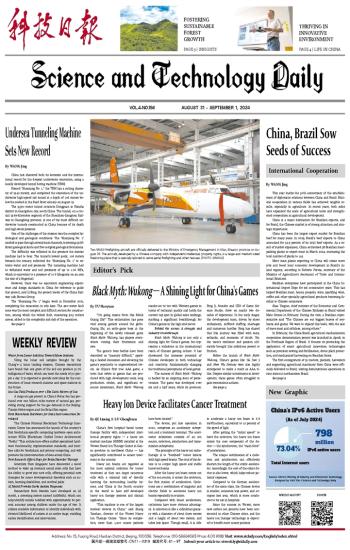
China just shattered both its domestic and the international record for the deepest underwater excavation, using a locally developed tunnel boring machine (TBM).
Named "Shenjiang No. 1," the TBM has a cutting diameter of 13.42 meters, and completed the excavation of the underwater high-speed rail tunnel at a depth of 106 meters below the seabed in the Pearl River estuary on August 19.
The 3,590 meter tunnel connects Dongguan to Nansha district in Guangzhou city, south China. The tunnel, on a crucial 13.69-kilometer segment of the Shenzhen-Jiangmen Railway in Guangdong province, is one of the most difficult underwater tunnels constructed in China because of its depth and high water pressure.
One of the challenges of the mission was the complex hydrological and geological conditions. The "Shenjiang No. 1" needed to pass through several main channels, traversing 13 different geological strata and five complex geological formations.
The difficulty was reflected in the pressure the intense machine had to bear. The tunnel's lowest point, 106 meters beneath the estuary, subjected the "Shenjiang No. 1" to extreme water and soil pressures. The tunneling machine had to withstand water and soil pressures of up to 1.06 MPa, which is equivalent to a pressure of 10.6 kilograms on an area the size of a fingernail.
However, there was no equivalent engineering experience and design standards in China for reference to guide that project, said Li Bing, the project leader of the China Railway 14th Bureau Group.
The "Shenjiang No. 1" began work in December 2021, completing the excavation in 969 days. The 490-meter fault zone was the most complex and difficult section for construction, among which the widest fault, measuring 32.5 meters across, added to the complexity and risk of the operation.
To solve the problems, the machine is equipped with a series of intelligent systems, such as automated pressure sealing, sophisticated ventilation and cooling systems, which greatly improves the adaptability under ultra-high water pressure conditions, ensuring the continuous, stable and safe excavation of the shield machine in the difficult geological section.
Once completed, the Shenzhen-Jiangmen Railway will allow travel between Qianhai free trade zone in Shenzhen and Nansha free trade zone in Guangzhou in just 30 minutes, boosting economic development in the Guangdong-Hong Kong-Macao Greater Bay Area.
At present, seven out of every 10 TBMs in the world come from China, and 95 percent of the TBMs used in China are manufactured domestically. "Our country now has about 5,000 TBMs, ranking first in the world," said Yan Jinxiu, former president of the International Tunnel Association.
"We will build a large database of TBM and cloud computing centers to effectively solve the problem of intelligent tunneling control," said Jia Lianhui, chief engineer of China Railway Equipment Group. Jia believes that unattended and intelligent tunneling will become a reality in the near future.

 Next
Next




